-
×
 2019 Pedroncelli Dry Creek Valley Estate Vineyard Wisdom Cabernet Sauvignon 750ML
1 × $47.99
2019 Pedroncelli Dry Creek Valley Estate Vineyard Wisdom Cabernet Sauvignon 750ML
1 × $47.99 -
×
 2019 Alvaro Palacios Priorat Gratallops
1 × $43.35
2019 Alvaro Palacios Priorat Gratallops
1 × $43.35 -
×
 2020 Clos de Napa Cellars Napa Valley Cabernet Sauvignon 750ML
1 × $28.99
2020 Clos de Napa Cellars Napa Valley Cabernet Sauvignon 750ML
1 × $28.99 -
×
 2019 Clos Floridene Graves 750ML
1 × $24.99
2019 Clos Floridene Graves 750ML
1 × $24.99 -
×
 2019 Maldonado Parr Vineyard Knights Valley Chardonnay 750ML
1 × $42.99
2019 Maldonado Parr Vineyard Knights Valley Chardonnay 750ML
1 × $42.99 -
×
 Vilmart & Cie Champagne 1er Cru Brut Grande Reserve
1 × $149.34
Vilmart & Cie Champagne 1er Cru Brut Grande Reserve
1 × $149.34 -
×
 2018 Chateau Tour Prignac Medoc Cru Bourgeois 750ML
1 × $17.99
2018 Chateau Tour Prignac Medoc Cru Bourgeois 750ML
1 × $17.99 -
×
 2016 Carte Blanche Proprietary Red 750ML
1 × $159.99
2016 Carte Blanche Proprietary Red 750ML
1 × $159.99 -
×
 2015 Fattoria Le Pupille Morellino di Scansano Riserva
1 × $33.00
2015 Fattoria Le Pupille Morellino di Scansano Riserva
1 × $33.00 -
×
 2018 Brutocao Cabernet Sauvignon Contento Vineyard Mendocino 750ML
1 × $21.99
2018 Brutocao Cabernet Sauvignon Contento Vineyard Mendocino 750ML
1 × $21.99 -
×
 2016 Chateau Teyssier Saint-Emilion Grand Cru 1.50L
1 × $62.99
2016 Chateau Teyssier Saint-Emilion Grand Cru 1.50L
1 × $62.99 -
×
 2019 Quinta del '67 750ML
1 × $17.99
2019 Quinta del '67 750ML
1 × $17.99 -
×
 2022 Chateau de Saint Cosme Gigondas Le Claux 750ML
1 × $157.99
2022 Chateau de Saint Cosme Gigondas Le Claux 750ML
1 × $157.99
Carpineto
Our story began in 1967
Carpineto was founded in 1967 in the little enclave of Dudda, just outside of Greve in Chianti by Giancarlo Sacchet and Antonio Mario Zaccheo with the purpose of making great Sangiovese in the Tuscan Classic appellations like it had never been done before.
The History
On their Chianti Classico farm they started with technical innovation. In the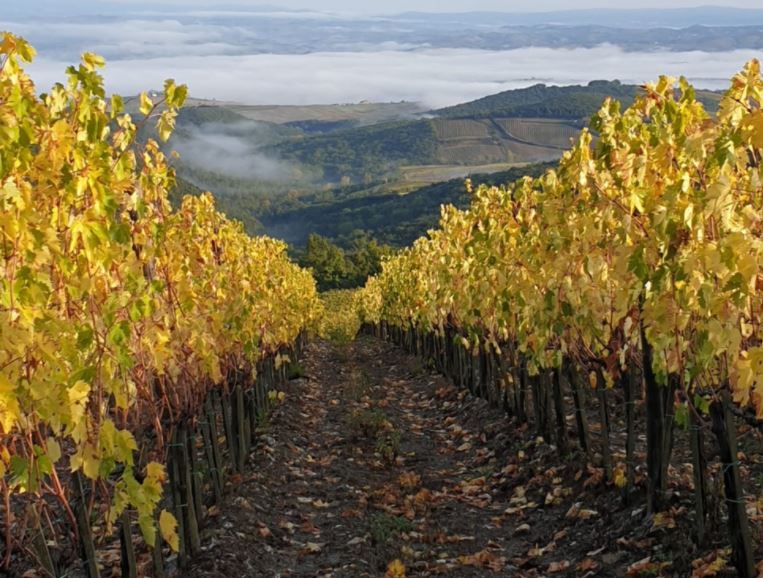 vineyards, site and clonal selection where their first steps, together with drastic yield reductions. In the cellars, already in 1980 they introduced controlled malolactic fermentation techniques, started experimenting with indigenous yeasts, planted grapes like chardonnay and cabernet sauvignon, aging them, and Sangiovese too, in small barrels, then developed carbonic and cold macerations and the list of innovations went on and on and on. As they said, it was not one single innovation that made a difference in the quality of Carpineto wines but the sum of a multitude of them, all the way from planting the vineyard to the dinner table.
vineyards, site and clonal selection where their first steps, together with drastic yield reductions. In the cellars, already in 1980 they introduced controlled malolactic fermentation techniques, started experimenting with indigenous yeasts, planted grapes like chardonnay and cabernet sauvignon, aging them, and Sangiovese too, in small barrels, then developed carbonic and cold macerations and the list of innovations went on and on and on. As they said, it was not one single innovation that made a difference in the quality of Carpineto wines but the sum of a multitude of them, all the way from planting the vineyard to the dinner table.
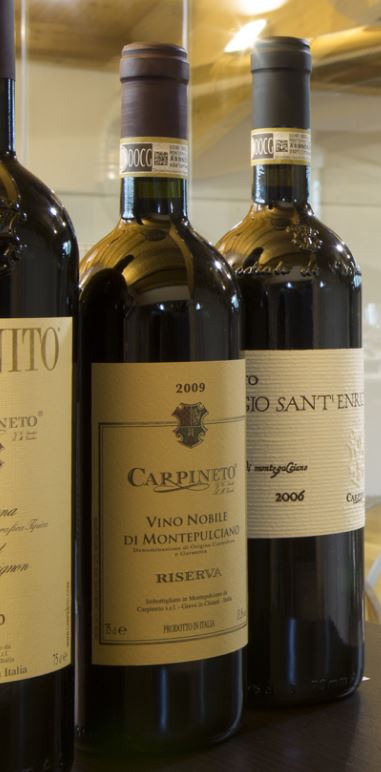 In 1994 at the IWSC in London, Carpineto wins a triple gold for Chianti Classico Riserva, Vino Nobile Riserva and Farnito Cabernet Sauvignon and Giancarlo Sacchet takes the Trophy for Best Winemaker of the World, the first Italian to win this prestigious award. With the European limelight now shining on Carpineto their efforts were also noticed in America by Wine Spectator that included the Farnito Cabernet Sauvignon in their top 100 list of 1998.
In 1994 at the IWSC in London, Carpineto wins a triple gold for Chianti Classico Riserva, Vino Nobile Riserva and Farnito Cabernet Sauvignon and Giancarlo Sacchet takes the Trophy for Best Winemaker of the World, the first Italian to win this prestigious award. With the European limelight now shining on Carpineto their efforts were also noticed in America by Wine Spectator that included the Farnito Cabernet Sauvignon in their top 100 list of 1998.
1998 is also the year in which, on the Vino Nobile estate, the first 10 hectares of high-density vineyards are planted to 8,600 vines per hectare, or 3600 vines per acre. Productions from this dry farmed hillside vineyard will average below one bottle per vine and the quality is truly exceptional. At almost 100 hectares, it will become what is probably the largest contiguous high-density vineyard in Italy. Also, in 1998, from the Montepulciano vineyards, Carpineto bottles the first 100% Sangiovese wine in the territory, called Poggio Sant’Enrico, anticipating a trend by many years.
No products were found matching your selection.
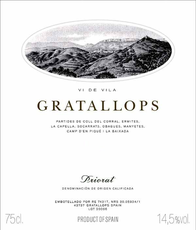 2019 Alvaro Palacios Priorat Gratallops
2019 Alvaro Palacios Priorat Gratallops  2020 Clos de Napa Cellars Napa Valley Cabernet Sauvignon 750ML
2020 Clos de Napa Cellars Napa Valley Cabernet Sauvignon 750ML  2019 Clos Floridene Graves 750ML
2019 Clos Floridene Graves 750ML 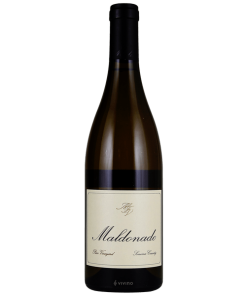 2019 Maldonado Parr Vineyard Knights Valley Chardonnay 750ML
2019 Maldonado Parr Vineyard Knights Valley Chardonnay 750ML  Vilmart & Cie Champagne 1er Cru Brut Grande Reserve
Vilmart & Cie Champagne 1er Cru Brut Grande Reserve  2018 Chateau Tour Prignac Medoc Cru Bourgeois 750ML
2018 Chateau Tour Prignac Medoc Cru Bourgeois 750ML  2016 Carte Blanche Proprietary Red 750ML
2016 Carte Blanche Proprietary Red 750ML 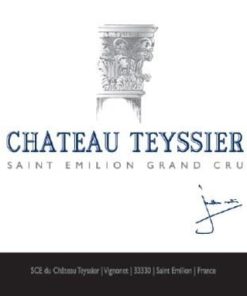 2016 Chateau Teyssier Saint-Emilion Grand Cru 1.50L
2016 Chateau Teyssier Saint-Emilion Grand Cru 1.50L  2019 Quinta del '67 750ML
2019 Quinta del '67 750ML 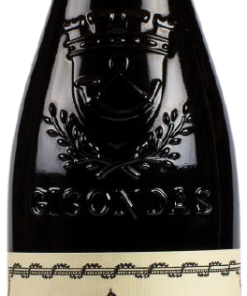 2022 Chateau de Saint Cosme Gigondas Le Claux 750ML
2022 Chateau de Saint Cosme Gigondas Le Claux 750ML